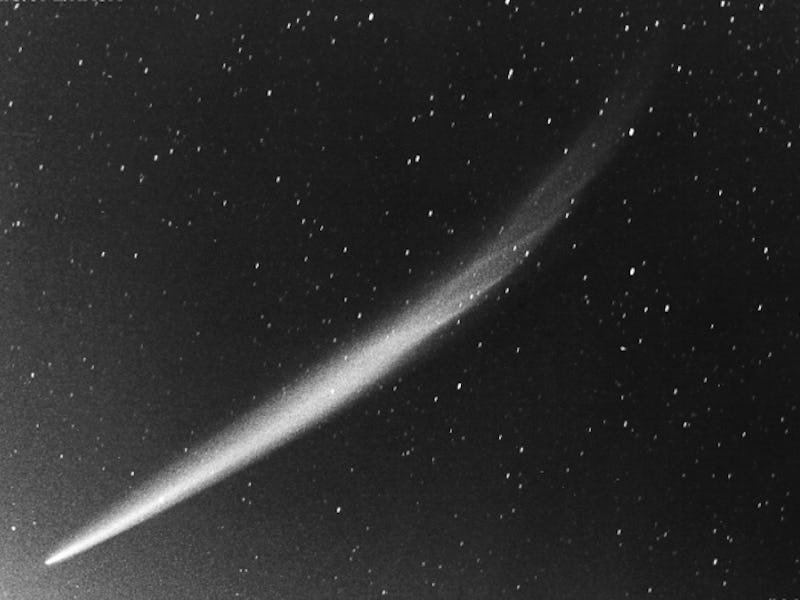How Tsutomu Seki Became Japan’s Celebrity Comet Hunter 50 Years Ago
In October of 1965, Tsutomu Seki looked up and found his life's work.

Tsutomu Seki is famous in Japan. He’s not as famous as he once was, but, 50 years after quietly stepping onto the national stage, he still commands respect.
Fifty years ago, Seki discovered the comet Ikeya-Seki, or C/1965 S1. Seki (and amateur astronomer Kaoru Ikeya, who worked independently from Seki) both observed the object on the morning of September 19, 1965, flying 100 million miles from the sun. Both men had discovered several other comets in their short careers — Seki, born in 1930, discovered his first at 26 — but this was different. This was big.
Soon after the discovery, astronomers all over the world started to run calculations and realized that on October 21, Ikeya-Seki would graze the surface of the sun. Just 291,000 miles away from the star’s surface, it shown 100 times brighter than Venus. It didn’t quite light up the sky, but it came close.
People in the Western U.S. were treated to a once-in-a-lifetime celestial spectacle Kitt Peak National Observatory astronomer Stephen Maran described as “The most splendid thing I have ever seen.” As the little ball of ice and rock streaked past the sun at over a million miles per hour, anyone looking closely enough could see its nucleus shattering into multiple pieces.
Comet Ikeya Seki
For a few days afterward, the comet’s tail lit up and stretched across the night sky, spanning the length of the Big Dipper. Scientists recorded it as 70 million miles long — the fourth largest comet tail ever recorded. Ikeya-Seki was one of the brightest comets humans had ever seen and Seki was the man who saw it coming. Not content to rest on his shining laurels, Seki continued to search the heavens and put up some impressive stats:
-Seki has discovered 224 minor planets.
-Seki has discovered six comets
-Seki has confirmed 28 periodic comets
Comet Ikeya-Seki
Seki is now the director of the Geisei Observatory in Japan, observatory and has been widely-recognized for his achievements, having received awards from the Astronomical Society of Japan, Oriental Astronomical Association, and many other institutions. But his discovery of Ikeya-Seki remains his greatest achievement. Undoubtedly, it helped inspire many curious kids and adolescents from around the world to start getting involved in amateur astronomy and be on the lookout for other objects hurtling around deep space.
Comets remain in the focal point of the public’s perception of space. The European Space Agency’s Rosetta spacecraft continues to show us amazing things about comet 67P and reveal incredible information about what these large and furious objects are and how they work. Other astronomers are just starting to expand on the work Seki did (and continues to do) so well.